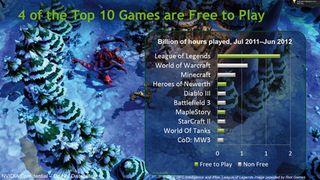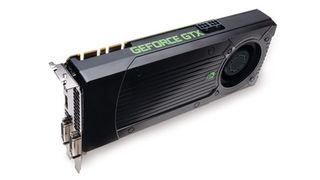Why PC gaming is far from dead
New tech can revive gaming on the humble PC, says Nvidia

PC gaming isn't merely clinging onto this mortal coil courtesy of a frayed SATA cable. It's in positively rude health.
It's growing in dilapidated, decadent Europe, it's taking off again in the grand ol' US of A, and it's exploding in Asia.
In fact, as none other than the evil geniuses at mega-developer EA recently opined: "The fastest growing platform for video games today is the PC." So, there you have it.
To be fair, things did look a bit grim in the period between roughly 2006 and early 2010, when the current crop of games consoles seemed to be having their way. But no longer. The question is, therefore, what changed, why did it happen and is it going to stick?

To find out more, who better to ask than the leading maker of performance graphics hardware for the PC, Nvidia?
Through its sales of GPUs, the company is hard wired into the PC gaming community. It feels the ups and downs of fickle gamers' whims as acutely as anyone, so it pores over the data in forensic detail
Market picture
First, let's have a little look at the numbers. What, exactly, do they show us? Nvidia gave us some insider access to a report produced by DFC Intelligence. Here are some of the highlights.
Get daily insight, inspiration and deals in your inbox
Sign up for breaking news, reviews, opinion, top tech deals, and more.
Back in 2010, the PC as a revenue generator from games was significantly smaller than consoles. Last year it largely closed that gap. This year it's predicted to be slightly bigger, and that's not expected to turn around until 2017. That's right, another five years. Just imagine what the PC will be capable of by then.
Hold that thought - we'll be coming back to it. During that time frame, mobile gaming is also expected to grow, but only until it's about one-third the size of console or PC gaming.

Intriguingly, sales of high-end Nvidia GPUs have also been on the up of late. Nvidia won't go into all the details, but says the GTX 680 is comfortably outselling its GTX 580 progenitor. So much for the death of enthusiast hardware. Another key trend has been a big uptick in the sales of notebook PCs with high-performance GPUs.
Meanwhile, PC game revenues are likely to become almost exclusively earned online, with a mix of subscriptions and digital downloads. Back in 2008, around 70 per cent of revenues were online, with the remainder coming from retail. Last year it was around 85 per cent. That figure will breach the 90 per cent barrier in the next few years and slowly climb to near 100 per cent.
That's interesting, as online gaming in one form or another is a major trend across all platforms but something PC gamers are much more likely to be doing than console gamers. So that's the first explanation for the growth in PC gaming. Due to its flexible and fast changing nature, it was better positioned to cash in on the shift to online.
Free for all
Another major new trend is free-to-play. Measured in hours played, four of the top 10 games are free to play. That's League of Legends, Heroes of Newerth, MapleStory and World of Tanks.
According to Nvidia's content development guru, Phil Wright, free-to-play caught a lot of people off guard. "Five years ago, most people in the games industry would have laughed at the prospect of a free-to-play triple-A title with cutting edge graphics. But it's happening right now," he says.

For proof, Wright points to our old friend Crytek - a game developer with a rep for pushing the graphical envelope. "After Crysis 3, Crytek is planning to go free-to-play," says Wright, inferring that's pretty much all you need to know about the subject of whether high-end graphics are compatible with free-to-play.
